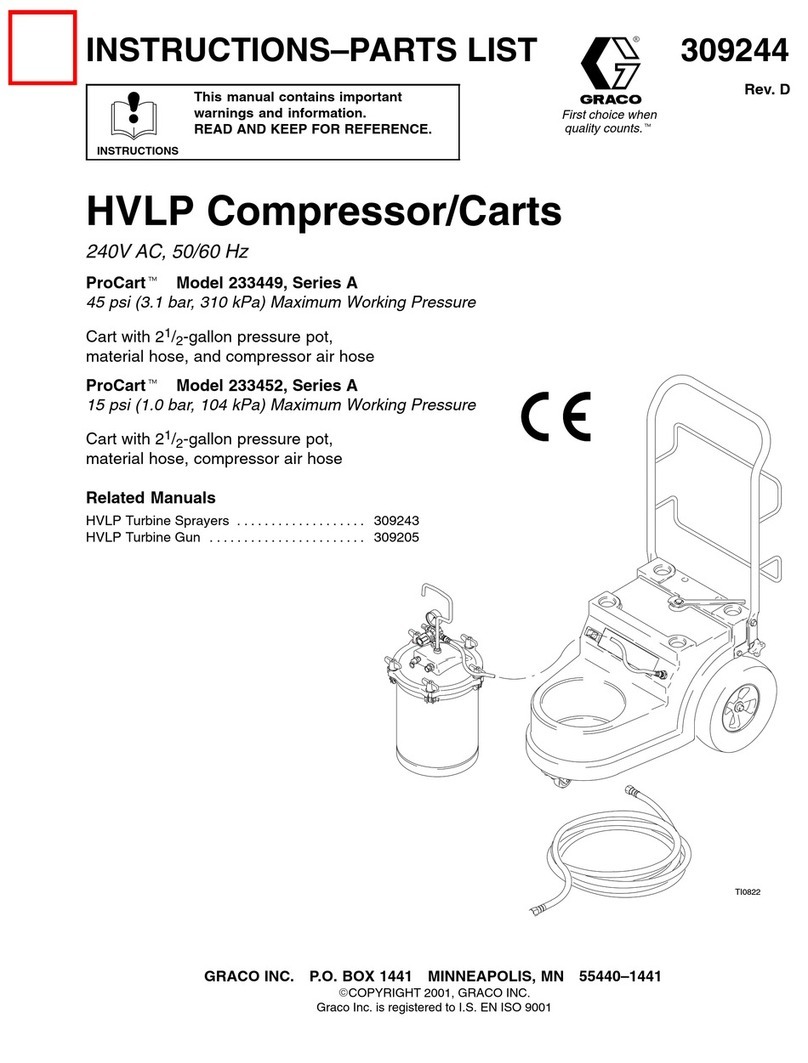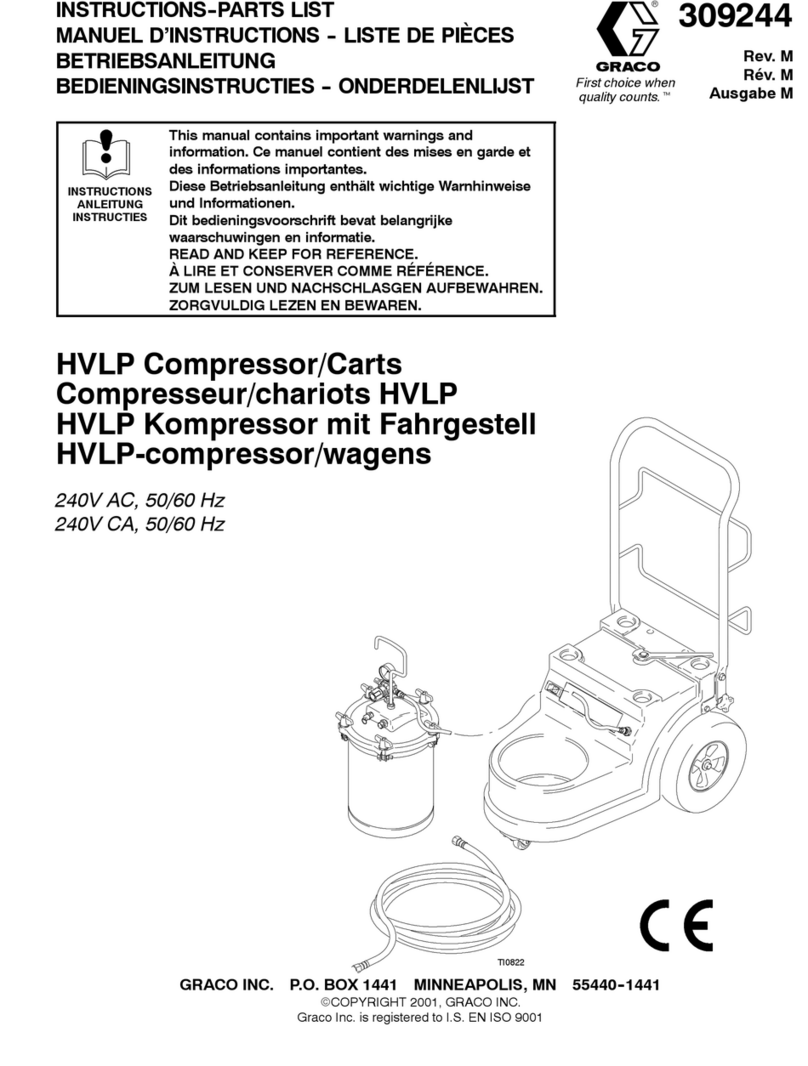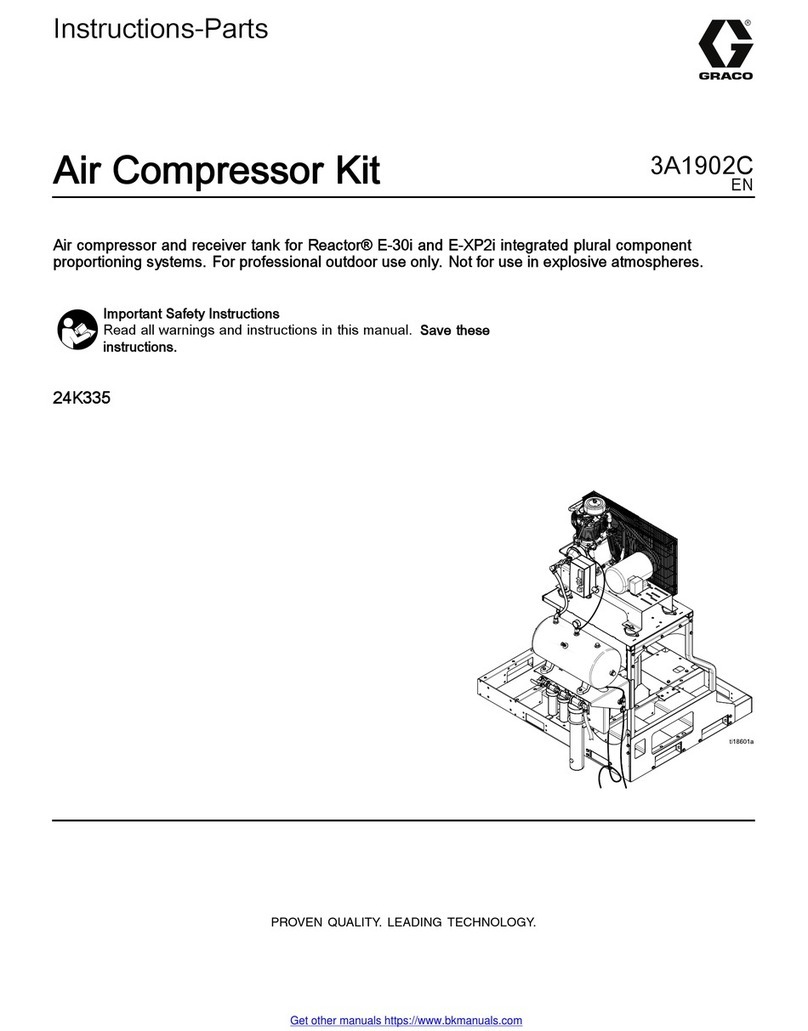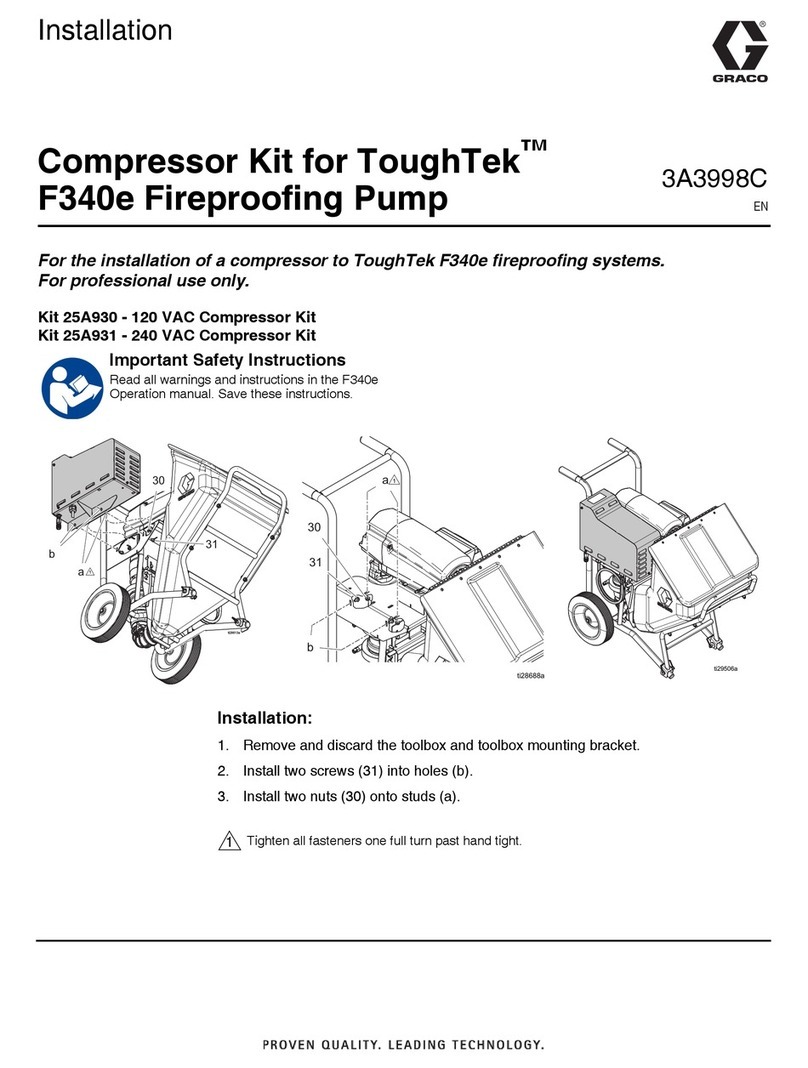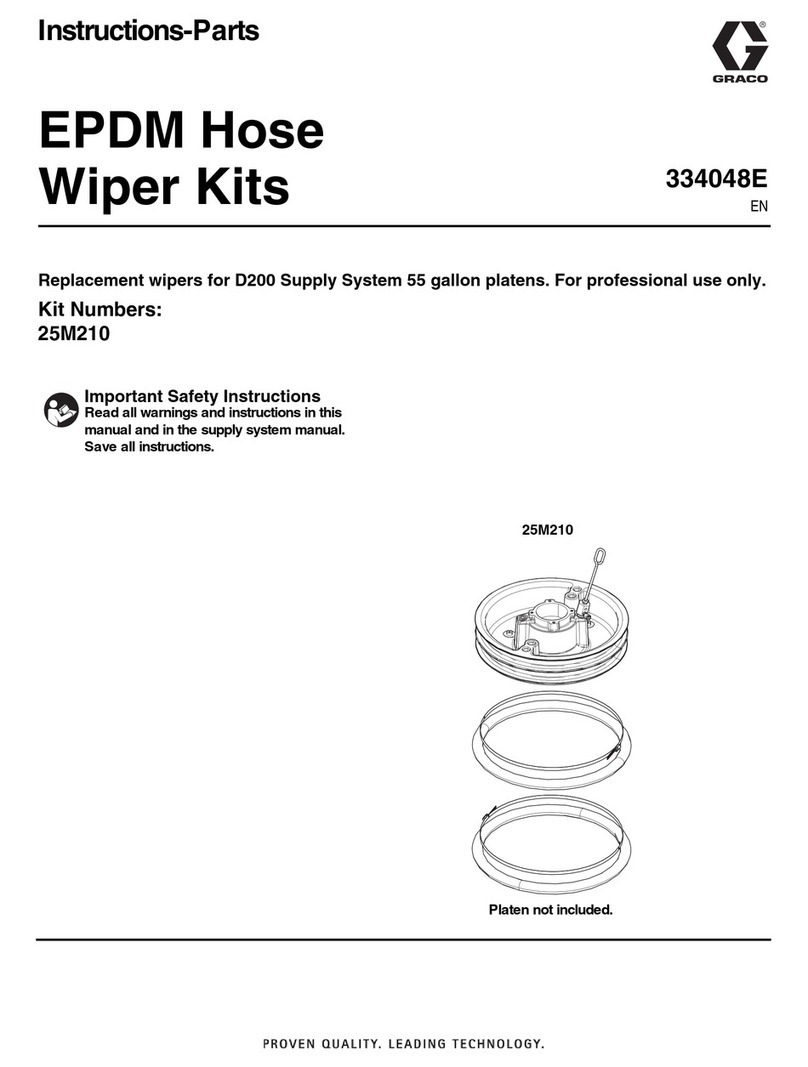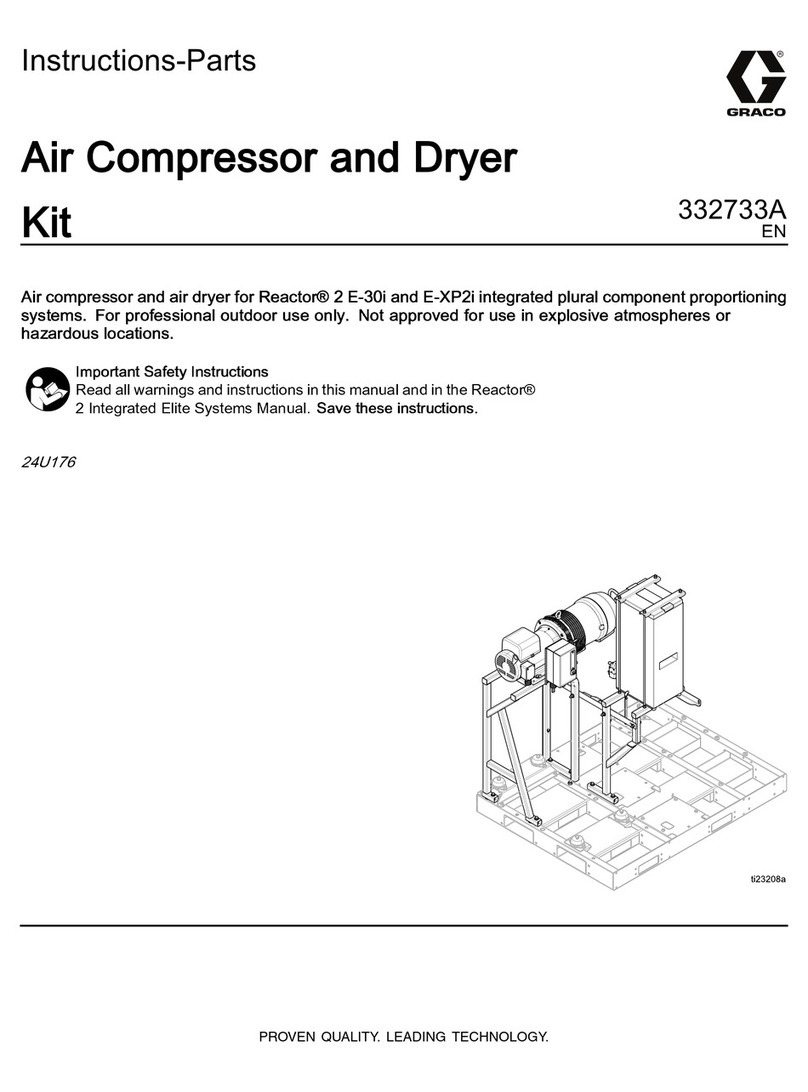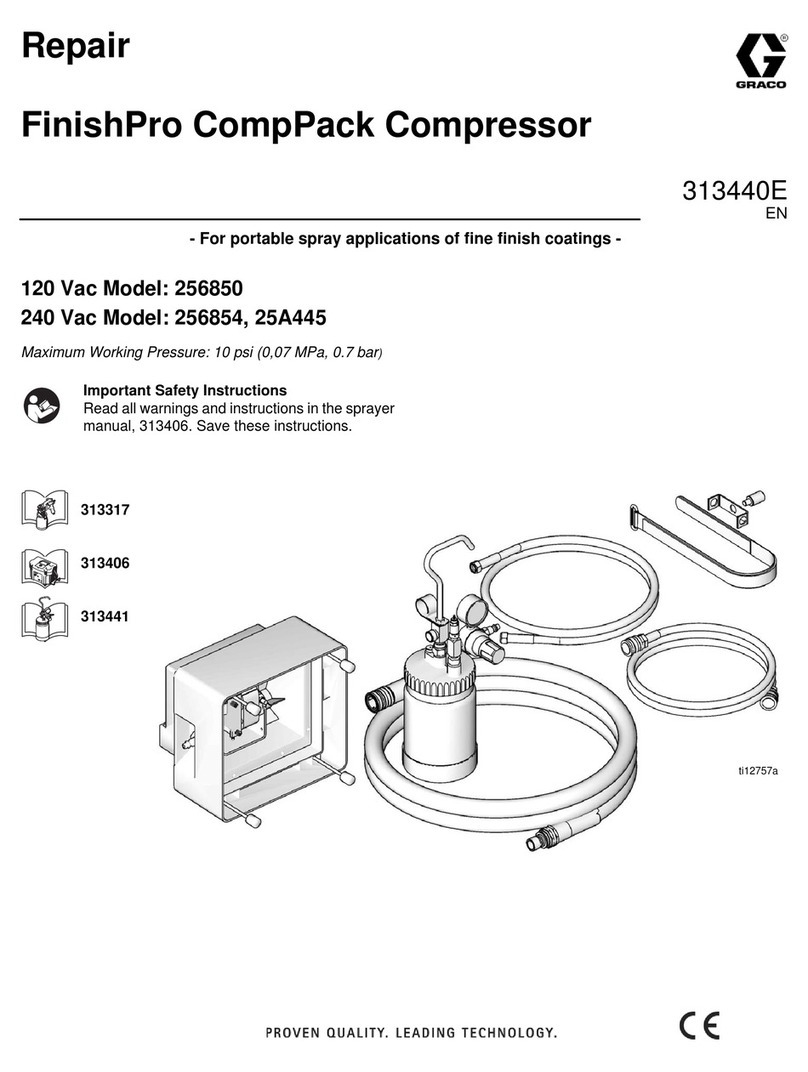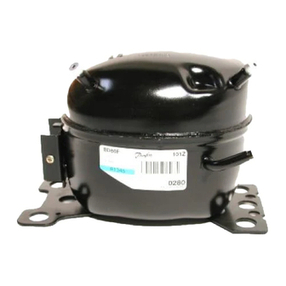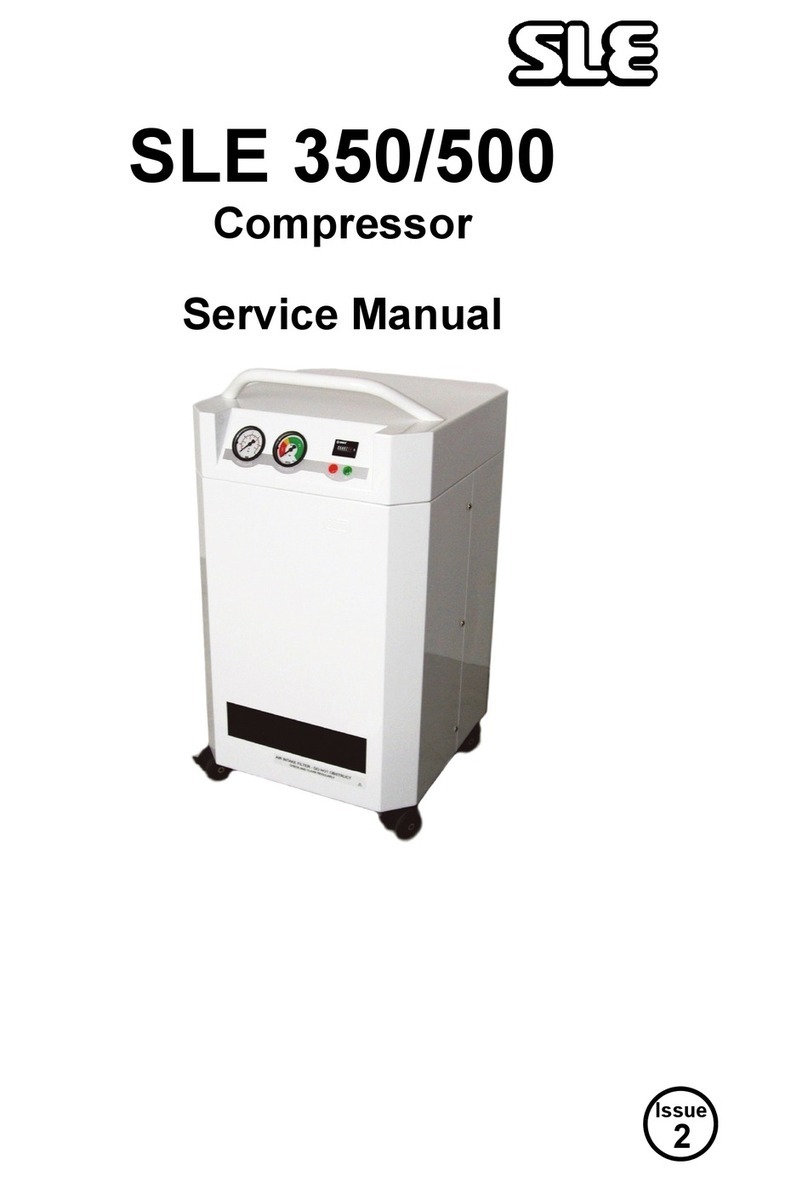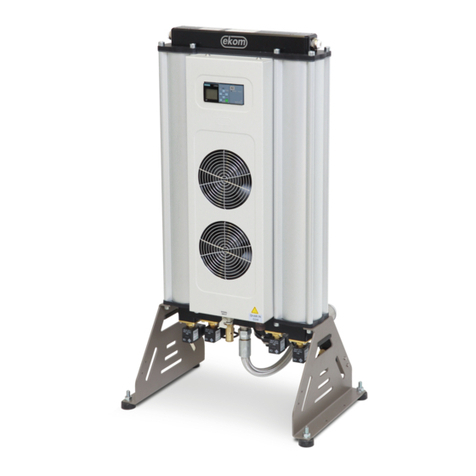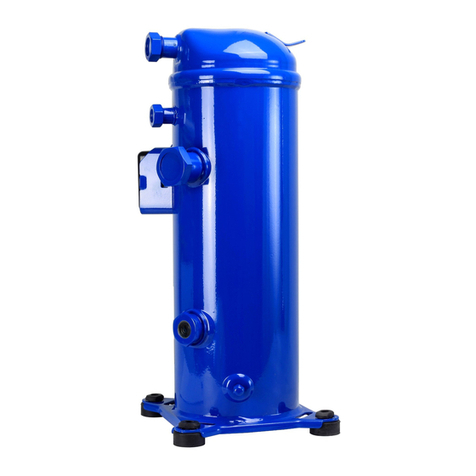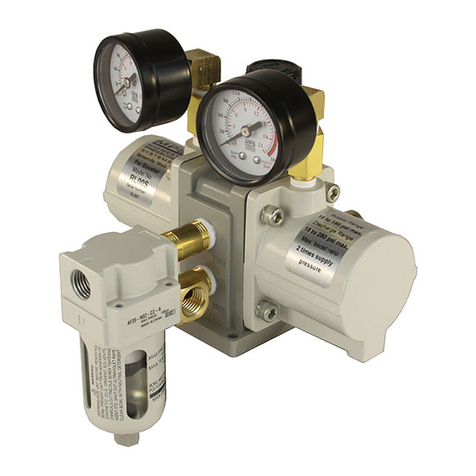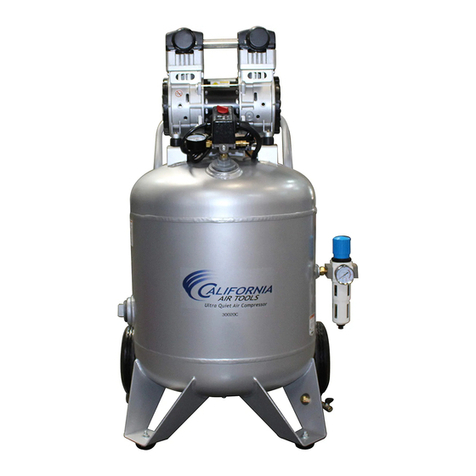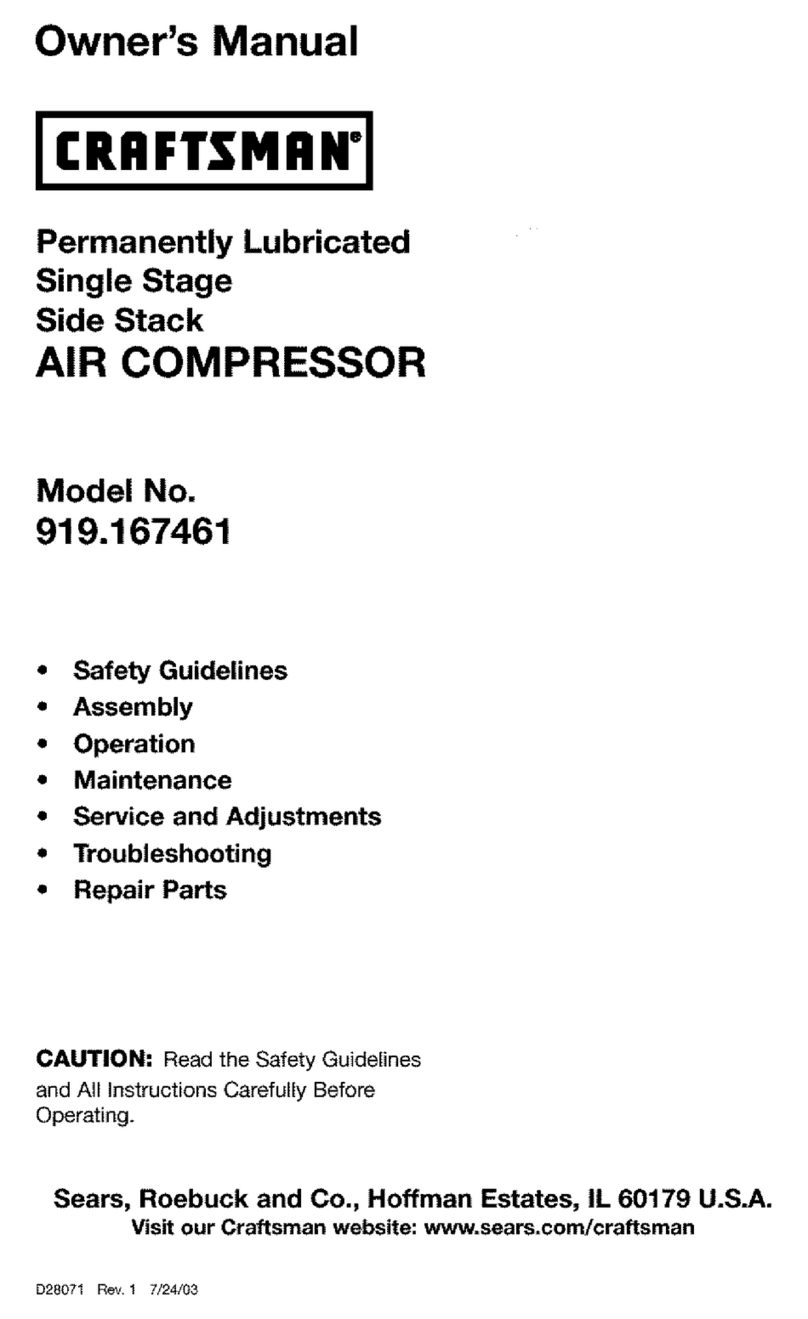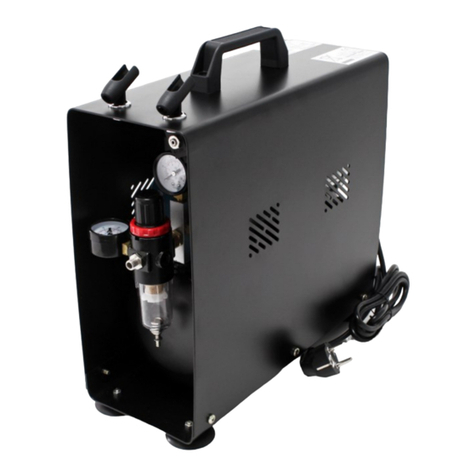Graco AirMax 1310G User manual

3A0595D
EN
-For Compressed Air Delivery-
-For outdoor use only-
Read all warnings and instructions in this manual.
SAVE THESE INSTRUCTIONS.
proven quality. leading technology.
200cc Honda 125 0.86 8.6
270cc Honda 175 1.21 12.1
37-1106 041811
http://gracomanual.com

2
Initial Setup ...................................................................... 9
Gasoline Engine ............................................................ 10
Pre-Start Checklist ........................................................ 10
Start-Up ......................................................................... 11
Shutdown ...................................................................... 11
THIS SPARK IGNITION SYSTEM COMPLIES WITH
CANADIAN ICES-002.
CE SYSTÈME D’ALLUMAGE PAR ÈTINCELLE EST
CONFORME À LA NORME NMB-002 DU CANADA.
262360- Model 1310G .................................................. 16
16E739 (For Use With Model 1310G) ............................ 18
262361- Model 1720G .................................................. 20
16E738 (For Use With Model 1720G) ............................ 22
http://gracomanual.com

3
The following warnings are for the setup, use, maintenance, and repair of this equipment. The exclama-
tion point symbol alerts you to a general warning and the hazard symbols refer to procedure-specic risks.
When these symbols appear in the body of this manual, refer back to these Warnings. Product-specic
hazard symbols and warnings not covered in this section may appear throughout the body of this manual
where applicable.
The engine exhaust from this product contains chemicals known to the State of California to cause cancer,
birth defects or other reproductive harm.
This product contains one or more chemicals known to the State of California to cause cancer and birth
defects or other reproductive harm.
The following is required by California State law, Section 4442 of the California Public Resources Code.
Other states may have similar laws. Federal laws apply on federal lands.
• A spark arrester must be added to the mufer of this engine if it is to be used on any forest covered,
brush covered or grass covered unimproved land. The arrester must be maintained in effective working
order by the operator.
• See your engine or equipment dealer for spark arrester mufer options.
Serious injury or death may occur from an air tank explosion if air tanks are not properly maintained.
• Drain air tank daily or after each use to prevent moisture buildup in the air tank.
• If air tank develops a leak, replace the air tank immediately. Never repair, weld or make modications to
the air tank or its attachments. Use only genuine repair parts for your air compressor.
• Never make adjustments to the factory set pressures.
Serious injury may occur from an air compressor malfunction or exploding accessories if incorrect system
components, attachments or accessories are used.
• Never exceed manufacturers maximum allowable pressure rating of attachments.
• Because of extreme heat, do not use plastic pipe or lead tin soldered joints for a discharge line.
• Never use air compressor to inate small, low pressure objects such as toys.
Serious injury or death may occur from normal sparks in the engine ignition system or engine exhaust/
mufer.
• Always operate air compressor in a well ventilated area free of ammable vapors, combustible dust,
gasses or other combustible materials.
• Do not smoke if spraying ammable material. Locate the air compressor at least 20 feet away from the
spray area. (An additional hose may be required.)
• Engine creates sparks. Do not operate in ammable environment. Follow all instructions and warnings
supplied with material to be sprayed.
• This equipment incorporates parts, such as snap switches, receptacles, produce arcs or sparks and,
therefore, when located in a garage, it should be in a room or enclosure provided for the purpose, or
should be 18 inches (457mm) or more above the oor.
Injury or death may occur as a result of improper fueling.
• Do not smoke while lling engine fuel tank
• Never ll the engine fuel tank while the unit is running or hot. Allow the engine to cool two minutes
WARNING
http://gracomanual.com

4
before refueling.
• Do not refuel indoors or in a poorly ventilated area.
• Always refuel slowly to avoid the possibility of spilled fuel which may cause a risk of re.
• Do not operate the unit if gasoline is spilled. Wipe unit clean and move the unit away from the spill.
Avoid creating any ignition until the gasoline has evaporated.
• Do not store the unit near an open ame or any equipment such as a stove, furnace, water heater, etc.,
which utilizes a pilot light or devices which can create a spark.
Serious injury may occur if any air compressor ventilation openings are restricted, causing the air com-
pressor to overheat and start a re.
• Never place objects against or on top of air compressor. Operate air compressor at least 12 inches
away from any wall or obstruction that would restrict proper ventilation.
Serious injury or death could occur from inhaling compressed air. The air stream may contain carbon
monoxide, toxic vapors or solid particles.
• Never inhale air from the air compressor either directly or from a breathing device connected to the air
compressor.
Serious injury or death may occur from inhaling engine exhaust.
• This air compressor was designed for outdoor use. Never operate this air compressor in an enclosed
area. Always make certain there is adequate ventilation (fresh outside air) for breathing and combustion.
This will prevent the buildup of dangerous carbon monoxide gases. Beware of poorly ventilated areas,
or areas with inadequate exhaust fans.
Sprayed materials such as paint, paint solvents, paint remover, insecticides, weed killers, etc. contain
harmful vapors and poisons.
• Operate air compressor only in a well ventilated area. Follow all safety instructions provided with the
materials you are spraying. Use of a respirator may be required when working with some materials.
Serious injury could occur from touching exposed metal parts. These areas can remain hot for some time
after the air compressor is shutdown.
• Never allow any part of your body or other material to make contact with any exposed metal parts on
the air compressor.
• Never allow any part of your body to contact the engine mufer or adjacent areas.
Soft tissue damage can occur from the compressed air stream.
• Always wear safety glasses to shield the eyes from ying debris.
• Never point the air stream at any part of your body, anyone else or animals.
• Never leave pressurized air in the air compressor. Shut off air compressor and relieve pressure when
storing or attempting maintenance.
Serious injury can occur from loose debris being propelled at a high speed from the compressed air
stream.
• Always maintain a safe distance from people and animals while operating the air compressor.
• Do not move the air compressor while air tank is under pressure. Do not attempt to move the air com-
pressor by pulling on the hose.
WARNING

5
Risk of bodily injury from moving parts.
• Before performing maintenance always turn off air compressor. Bleed pressure from the air hose and
disconnect spark plug wire to prevent engine from starting unexpectedly. All repairs to the air compres-
sor should be made by an Authorized Service Person.
• Do not operate without protective covers/guards. Always turn off air compressor before removing any
guard. Replace damaged covers/guards before using the air compressor.
Misuse can cause death or serious injury.
• Check equipment daily. Repair or replace worn or damaged parts immediately with genuine manufac-
turer’s replacement parts only.
• Do not alter or modify equipment.
• Use equipment only for its intended purpose. Call your distributor for information.
• Route hoses and cables away from trafc areas, sharp edges, moving parts, and hot surfaces.
• Comply with all applicable safety regulations.
• Never allow children or adolescents to operate this air compressor!
• Stay alert-watch what you are doing.
• Do not operate the air compressor when fatigued or under the inuence of alcohol or drugs.
• Know how to stop the air compressor. Be thoroughly familiar with controls.
You must wear appropriate protective equipment when operating, servicing, or when in the operating area
of the equipment to help protect you from serious injury, including eye injury, hearing loss, inhalation of
toxic fumes, and burns. This equipment includes but is not limited to:
• Protective eyewear, and hearing protection.
WARNING

6
Item Description
1 Beltguard
2 AirFilter
3 OilFillPort
4 AirCompressorPump
5 PumpOilDrain
6 OilSightGlass
7 PilotValve
8 EngineSwitch
Item Description
9 Engine
10 EngineThrottleControl
11 PressureGauge-TankPsi
12 TankDrainValve
13 PressureReliefValve
14 PressureGauge-OutletPsi
15 OutletFitting
16 PressureRegulator

7
Item Description
1 Engine
2 EngineSwitch
3 EngineAirThrottleControl
4 PilotValve
5 OilSightGlass
6 PumpOilDrain
7 PressureReliefValve
8 PressureGauge-TankPsi
Item Description
9 Beltguard
10 AirFilter
11 OilFillPort
12 Pump
13 PressureRegulator
14 OutletFitting
15 PressureGauge-OutletPsi
16 TankDrainValve

8
SAFETY RELIEF VALVE: This valve is designed to pre-
vent system failures by relieving pressure from the sys-
tem when the compressed air reaches a predetermined
level. The valve is preset by the manufacturer and
must not be modied in any way. To verify the valve is
working properly, pull on the ring. Air pressure should
escape. When the ring is released, it will reset.
PILOT VALVE: When the toggle is in the upright posi-
tion, all air from the air compressor is vented through
the discharge mufer. This gives an easy start feature.
For normal operation, the toggle is in the 90° position.
AIR INTAKE FILTER: This lter is designed to clean air
coming into the pump. To ensure the pump continu-
ally receives a clean, cool, dry air supply this lter must
always be clean and ventilation opening free from ob-
structions. Replace lter element when necessary.
OIL FILL PORT/VENT: Pour oil into the Oil Fill Port/Vent
when required.
OIL SIGHT GLASS: The Oil Sight Glass displays the oil
level in the pump. The oil level should be at the center
of the Oil Sight Glass. If low, add SAE 30W non-deter-
gent oil.
AIR COMPRESSOR PUMP (Single Stage): To compress
air, the pistons move up and down in the cylinders. On
the downstroke, air is drawn in through the air intake
valves while the exhaust valves remain closed. On the
upstroke, air is compressed, the intake valves close
and compressed air is forced out through the exhaust
valves, into the discharge line, through the pilot valve
and into the air tank.
AIR COMPRESSOR PUMP (Two Stage): A two stage
compressor pump uses two different size cylinders with
the intake valve of the second smaller cylinder linked
to the exhaust valve of the rst larger cylinder. On the
down stroke of the large cylinder, air is drawn through
the intake valve while the exhaust valve remains closed.
On the upstroke, air is compressed, the intake valve
closes and compressed air is forced out through the ex-
haust valve, into the inter cooler and through the intake
valve of the second smaller cylinder on its down stroke.
On the upstroke of the smaller cylinder, the intake valve
closes and the compressed air is compressed a second
time and forced out the exhaust valve into the discharge
line, through the tank check valve and into the air tank.
AIR TANK PRESSURE GAUGE: The air tank pressure
gauge indicates the reserve air pressure in the air tank (s).
PRESSURE REGULATOR: The air pressure coming
from the air tank is controlled by the regulator knob.
Turn the pressure regulation knob clockwise to increase
discharge pressure, and counterclockwise to decrease
discharge pressure.
OUTLET PRESSURE GAUGE: The outlet pressure
gauge indicates the air pressure available at the outlet
side of the regulator. This pressure is controlled by
the regulator and is always less or equal to the air tank
pressure.
AIR TANK DRAIN VALVE: The drain valve is used to
remove moisture from the air tank(s) after the air com-
pressor is shut off.
To open the drain valve, turn the knob coun-
terclockwise.
OIL FILL PORT
OIL SIGHT GLASS

9
Read safety warnings before setting-up air compres-
sor. The following information contains operating and
maintenance instructions.
Ensure the oil level in the air compressor pump is ad-
equate. If low, add sae 30w non-detergent oil.
NOTICE
In order to avoid damaging the air compressor, do not
incline the air compressor transversely or longitudinally
more than 10°.
Place air compressor at least 12 inches away from ob-
stacles that may prevent proper ventilation.
Do not place air compressor in an area:
• Where there is evidence of oil or gas leaks.
• Where ammable gas vapors or materials may be
present.
• Where air temperatures fall below 32°F or exceed
104°F.
• Where extremely dirty air or water could be drawn
into the air compressor.
Do not operate in an enclosed area. Use this product
only in well ventilated areas. Exhaust from the engine
contains carbon monoxide, a poisonous orderless and
invisible gas. Breathing the gas can cause serious in-
jury, illness and possible death.

10
Review “Fire & Explosion Precautions” pg. 3, before
fueling.
Locate the Safety Decals on your unit and heed their
warnings.
Read the engine manual accompanying this air com-
pressor for correct engine start-up maintenance proce-
dures.
A minimum of 86 octane fuel is recommended for use
with this unit. Do not mix oil with gasoline.
Purchase fuel in quantities that may be used within 30
days. Use of clean, fresh lead free gasoline is recom-
mended. Leaded gasoline may be used if lead-free is
unavailable. Do not use gasoline containing methanol
or alcohol.
Check the engine oil level before starting the engine.
(See engine manual.)
Fill the fuel tank according to accompanying engine
manual instructions.
Refer to the engine manual for all necessary mainte-
nance and adjustments.
1. Check oil level. Add if necessary.
2. Remove any moisture in the air compressor air tank.
Risk of bodily injury. Never attempt to open the Air Tank
Drain Valve when more than 10 PSI of air pressure is in
the air tank.
3. Remove excessive pressure with an air tool, then open
the Air Tank Drain Valve in the bottom of the air tank.
Close tightly when drained.
4. Make sure the engine switch is in the “OFF” position.
5. Make sure the safety relief valve is working correctly.
6. Make sure all guards and covers are in place and
securely mounted.
Do not alter or modify this equipment in any matter!
Incorrect operation of this unit can cause serious injury!

11
Read all safety warnings before performing operation.
Do not attempt to operate this air compressor until you
have read and understood all safety precautions and
instructions listed in this manual.
1. Flip the toggle on top of the pilot valve to the upright
position. This provides a loadless start. The air
compressor will unload and allow easier engine start-
up.
2. Start the engine. Refer to the Engine Manual.
3. When the engine has run for 1-2 minutes, ip toggle
back to the original position.
4. Set pressure by adjusting the pressure regulator
counterclockwise for less pressure and clockwise for
more pressure.
NOTICE
If you notice any unusual noise or vibration, stop the
air compressor and refer to “Troubleshooting”.
1. To stop the air compressor, move the engine switch to
the “OFF” position. Refer to the Engine Manual.
2. Drain air from the air tanks by releasing air with an
attached air tool or by pulling on the safety relief
valve.
3. Once the air tank pressure gauge registers under 10
pounds, open the drain valve under each air tank to
drain any moisture.
4. Allow the air compressor to cool down.
5. Wipe air compressor clean and store in a safe, non-
freezing area.

12
Read the instruction manual before performing main-
tenance. The following procedures must be performed
when stopping the air compressor for maintenance or
service.
1. Turn off air compressor.
2. Disconnect spark plug wire from engine.
3. Open all drains.
4. Wait for the air compressor to cool before starting
service.
NOTICE
* The pump oil must be changed after the rst
50 hours of operation and every 200 hours or 3
months, whichever comes rst.
The engine oil must be changed after the rst 8
hours of operation and every 50 hours or 3 months,
whichever comes rst.
Every 2 years, an Authorized Service Technician
should check the check valve, intake valves and
delivery valves.
Interval What to do
Daily Check pump oil level. Check engine oil
level. Oil leak inspection. Check engine
air lter. Drain condensation in air
tank(s). Inspect guards/covers. Check
unusual noise/vibration. Check for air
leaks.
Weekly Clean exterior of compressor. Inspect
air lter.
Monthly Inspect belt. Check safety relief valve.
200 hours Change pump oil*. Replace air lter.
Check engine spark plug.

Engine will not start. Various engine problems. Refer to the engine manual accom-
panying your unit.
Low engine oil level. Engine is equipped with an Oil Alert
System which will not allow the
engine to start if oil level is low. Add
oil, if needed.
Noisy operation. Loose engine pulley or pump y-
wheel.
Tighten pulley and or ywheel.
Lack of oil in the pump. Add correct amount of oil. Check
for bearing damage.
Carbon deposits on pistons or
valves.
Remove cylinder head and inspect.
Clean or replace.
Bearing, piston or connecting rod
failure.
Stop the air compressor. Contact
Graco Customer Service.
Pressure drop in air tank or rapid
pressure loss when air compres-
sor is shut off.
Air leaks at connections. Allow air compressor to build
pressure to the maximum allowed.
Turn off and brush a soapy wa-
ter solution onto all connections.
Check connections for air bubbles.
Tighten the connections where
leaks are present.
Air leak in air tank. Air tank must be replaced. DO NOT
attempt to repair air tank.
Defective Pilot Valve. Clean or replace.
Insufcient pressure at air tool or
accessory.
Pressure Regulator not turned to
high enough pressure or defective.
Adjust Pressure Regulator to
proper setting or replace.
Restricted air intake. Clean or replace Air Intake Filter.
Air leaks or restrictions. Check for leaks and repair.
Hose or hose connections are too
small or long.
Replace with larger hose or con-
nectors.
Slipping belt. Tighten or replace.
Air compressor is not large enough
for air requirement.
Check the accessory air require-
ment. If it is higher than the CFM or
pressure supply to the air compres-
sor, use a larger air compressor.
Restriction in Pilot Valve Clean or replace.
Air leaks from Safety Relief Valve. Possible defective Safety Relief
Valve.
Operate Safety Relief Valve manu-
ally by pulling on ring. If it still
leaks, it should be replace.
Excessive air tank pressure. Clean, reset or replace Pilot Valve.
Air leaks at pump. Defective gaskets. Torque head bolts: Single Stage=17
ft./lbs. Two Stage=33 ft./lbs.
Air blowing from Air Intake Filter. Defective inlet (reed) valve. Contact Graco Customer Service.
Moisture in discharge air. Condensation in air tank caused by
high level of atmospheric humidity
or air compressor is not run long
enough.
Run air compressor a minimum of
one hour to prevent condensation
buildup. Drain air tank after every
use. Drain air tank more often in
humid weather and use an air line
lter.

Excessive oil consumption or oil
in hose.
Restricted Air Intake Filter. Clean or replace.
Air compressor on unlevel surface. Do not incline the air compressor
more than 10° in any direction while
running.
Crankcase overlled with oil. Drain oil. Rell to proper level with
SAE-30W non detergent oil.
Wrong viscosity. Drain oil. Rell to proper level with
SAE-30W non detergent oil.
Plugged oil dipstick vent. Clean.
Plugged crankcase breather. Clean or replace.
Oil leaks. Torque head bolts: Single Stage=17
ft./lbs. Two Stage=33 ft./lbs.
Worn piston rings or scored cylinder. Contact Graco Customer Service.
Oil has milky appearance. Water in oil due to condensation. Change oil and move air compres-
sor to a less humid environment.

15

16

17
1 Handle Grip 16E762 2
2 Petcock 16E719 2
3 Decal - Tank Drain 2
4 Isolator 16E686 4
5 Bolt 100022 8
6 Washer 110755 8
7 Locknut - 1/4-20 102040 6
8 Decal - Graco Airmax 1310G 16E424 1
9 pDecal - Maintenance
Instructions (E) 1
10 pDecal - Maintenance
Instructions (S/F) 1
11 Washer 111841 8
12 Wheel 16E476 1
13 Axle 16E697 1
14 Cotter Pin 16E755 2
15 Air Tank Assembly N/A 1
16 Tightener Bracket 16E699 1
17 Bolt 100454 1
18 Washer 100731 1
19 Pilot Valve 16E713 1
20 Air Throttle Control
Assembly 16E764 1
21 Elbow 16E721 1
22 Tube Support 16E724 2
23 Hose *(Two Feet Required) 16E689 1
24 Nut 16E720 1
25 Air Throttle Control N/A 1
26 Hose 16E688 1
27 Elbow 16E728 1
28 Spacer 16E751 4
39 Beltguard Bracket 16E702 1
30 Bolt 802127 4
31 Washer 16E602 14
32 Locknut 111040 10
33p Decal - Risk Of Fire 1
34p Decal - Risk Of Burns 1
35 Engine 16E658 1
36 Decal - Check Oil 2
37 Key 197792 1
38 Bolt 16E734 2
39 Sheave 16E678 1
40 Belt 16E682 1
41 Bushing 16E769 1
42 Edging *(Four Feet Required) 16E492 1
43 Beltguard Cover 16E768 1
44 pDecal - Operating Instructions (E) 1
45 Bolt 16E599 4
46 pDecal - Operating Instructions (S/F) 1
47 pDecal - Risk of Burns 2
48 pDecal - Beltguard in Place 1
49 Edging *(Three Feet Required) 16E492 1
50 Beltguard Back 16E767 1
51 Pump 16E739 1
52 Air Filter Assembly 16E696 1
53 Filter 16E695 1
54 Washer 107194 8
55 Bolt 100521 4
56 Decal- Silver Sticker N/A 1
57 Pressure Gauge 16E707 2
58 Reducer 16E715 1
59 Safety Valve 16E705 1
60 Tee 16F025 1
61 pDecal - Caution/Warning/
Danger (E/S/F) N/A 1
62 Hose Barb 16E723 1
63 Hose Clamp 16E502 2
64 Hose 16J759 1
65 Hose Barb 16E482 1
66 Regulator 16E706 1
67 Plug 16E729 1
68 Nipple 156849 1
69 Regulator Mounting
Bracket 16E698 1
70 Bolt 114251 2
71 Qc Socket 16F183 1
72 pDecal Set, Safety, (Includes 3, 9,
10, 33, 34, 36, 44, 46, 47, 48, 61) 16F185 1
p Replacement warning decals available at no cost.

18

19
Kit, Repair, Valve Plate Assy 24E998 1
Includes 2-8 (1)
Kit, Repair, Piston Seals 24E999 2
Includes 15
Kit, Repair, Piston 24F002 2
Includes 11-14
Kit, Repair, Pump Gaskets 24F001 1
Includes 2, 8, 9, 10

20
This manual suits for next models
1
Table of contents
Other Graco Air Compressor manuals
Popular Air Compressor manuals by other brands
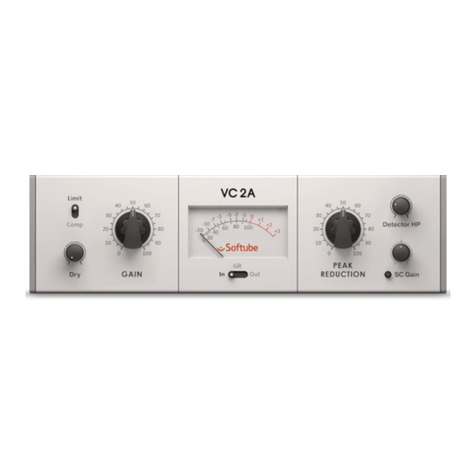
Native Instruments
Native Instruments VC 2A manual
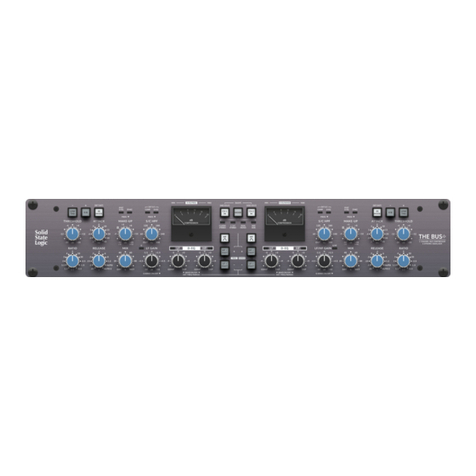
Solid State Logic
Solid State Logic THE BUS+ quick start guide
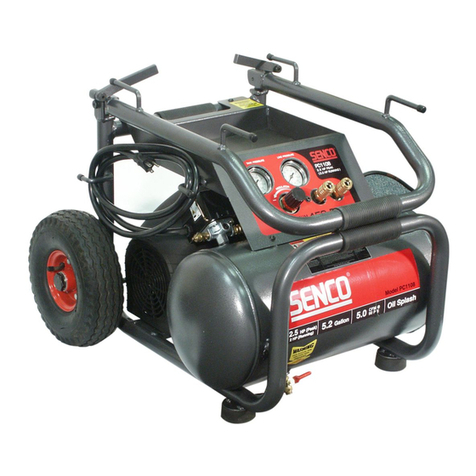
Senco
Senco WARRANTY PC1108 operating instructions

California Air Tools
California Air Tools 4610ALFC owner's manual
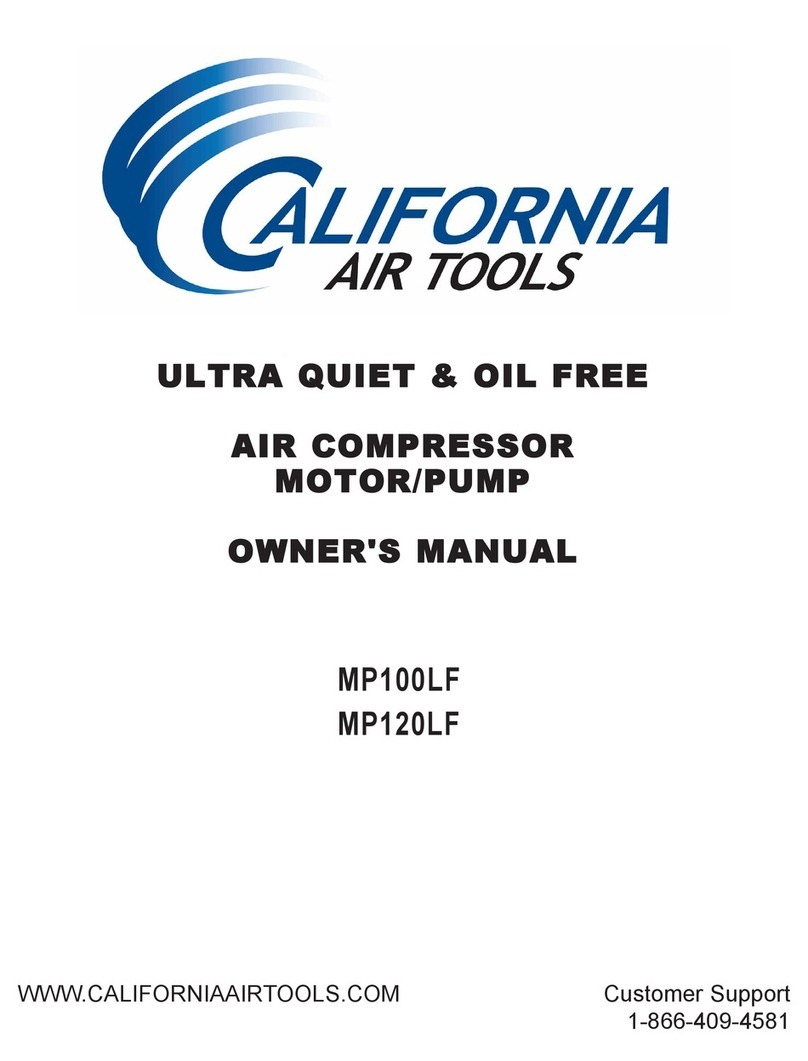
California Air Tools
California Air Tools MP100LF owner's manual
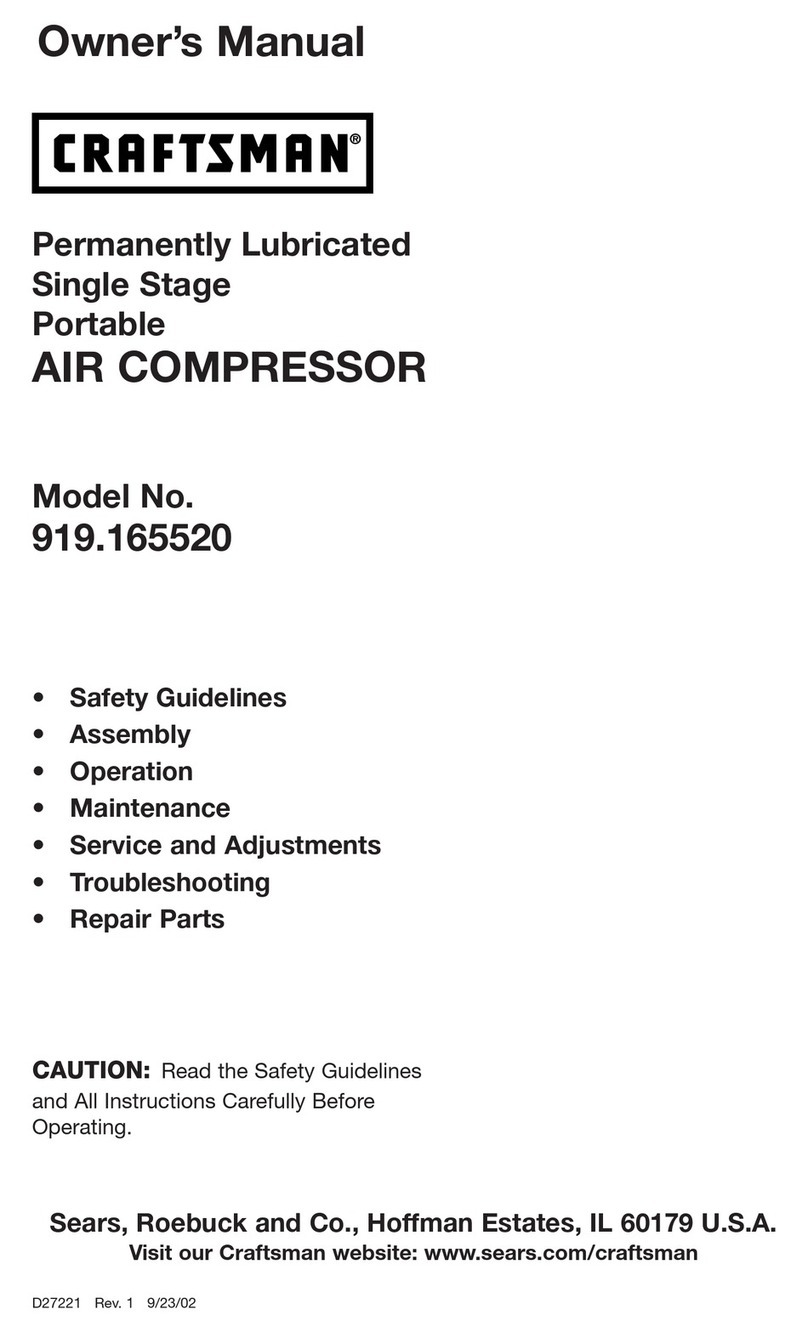
Craftsman
Craftsman 919.165520 owner's manual
